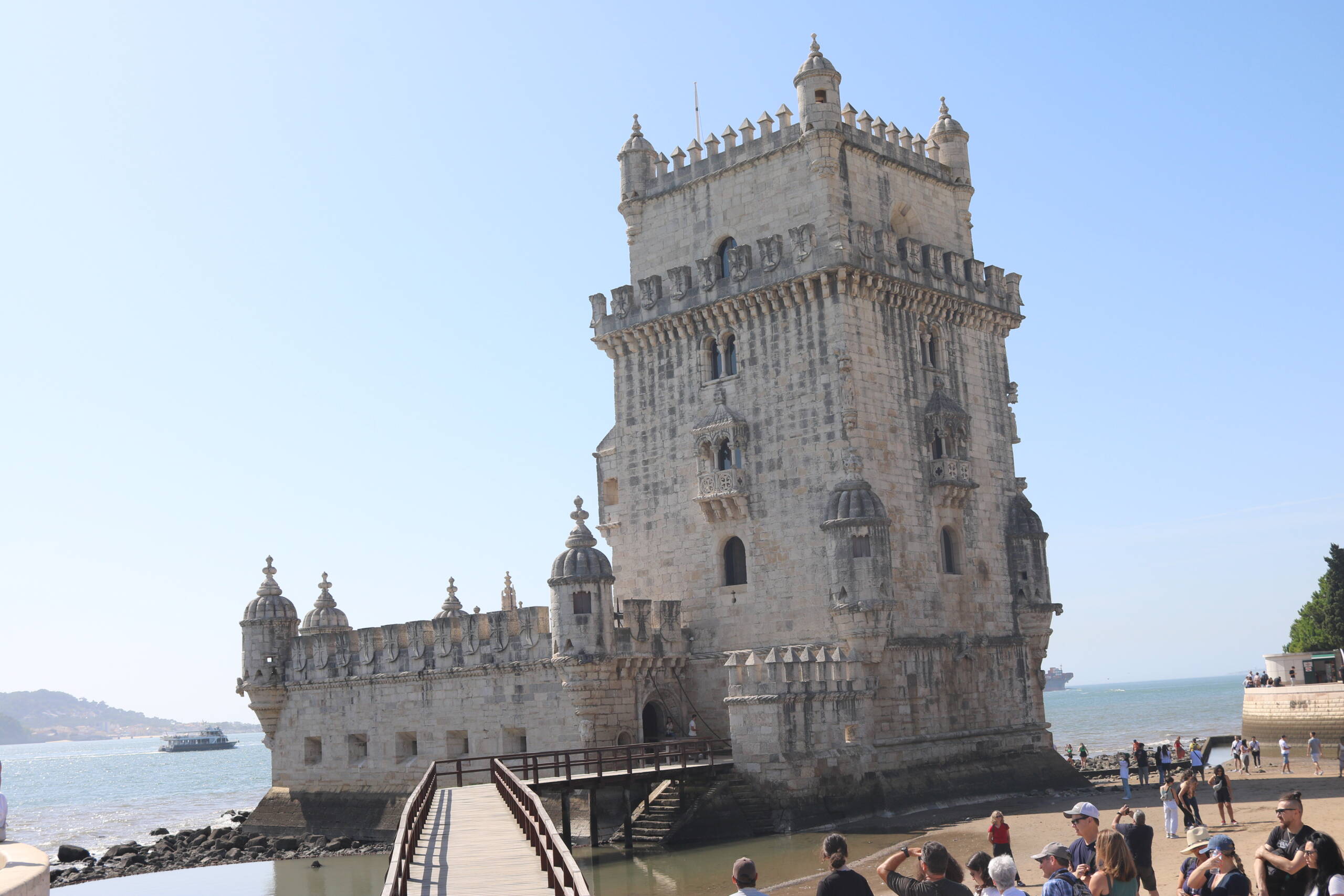There’s something strangely comforting about looking at a travel photo that isn’t perfect. Take the picture of Belém Tower in Lisbon as an example. The horizon tilts a little, the sunlight is so strong it washes out details in the stone, and the frame is crowded with tourists standing on the sandy bank, each with cameras or phones raised. Some are squinting against the harsh glare, others lost in conversation, while boats drift lazily in the Tagus behind them. It’s not the kind of clean, polished shot you’d expect on a postcard or in a travel magazine — and that’s exactly what makes it so much better.

We often fall into the trap of thinking travel photography should be flawless. Perfectly horizontal horizons, monuments captured without a single stranger in sight, skies filtered into smooth gradients of blue. But travel isn’t like that. Travel is messy, busy, alive. A photo without people might look more “perfect,” but it misses the real story. The truth is that strangers in your shot become part of the memory: the family standing next to you on the bridge, the tourist adjusting their sunglasses just as you clicked the shutter, the vendor shouting about pastel de nata somewhere out of frame. Those are details you’ll remember years later, long after a sterile, empty-frame version would have faded into genericness.
Even the tilted horizon has a voice. It tells you this wasn’t a carefully staged scene but a quick capture, maybe taken while you were walking, distracted, or shifting between conversations and the hum of the crowd. The imperfection becomes a timestamp, a mark of movement and presence. The sunlight glaring off the stone isn’t just bad lighting — it’s a reminder of how Lisbon feels at midday, the heat pushing you to find shade or buy cold water. The chatter of people, the shuffle of footsteps on the wooden walkway, the laughter in the background — all of that comes rushing back when you look at a picture like this, precisely because it isn’t perfect.
That’s the real charm of imperfect travel photos. They’re not about presenting the world as it should be, but about remembering it as it was. The crooked frame, the harsh glare, the stranger walking through your shot — they’re not flaws, they’re truths. They are the rough edges that make the memory authentic. Years from now, when you scroll back through your photos, it won’t be the polished, brochure-perfect shots that bring you back to that day. It will be these imperfect ones that carry the warmth of the sun, the sound of the crowd, the feeling of standing in front of history with dozens of others.
So next time you find yourself worrying about getting the perfect angle, don’t. Let the horizon tilt, let people wander into your frame, let the moment be what it is. Travel is about being part of the world in motion, not cutting it out. And that’s what makes the imperfect photo, in its own quiet way, absolutely perfect.
Leave a Reply